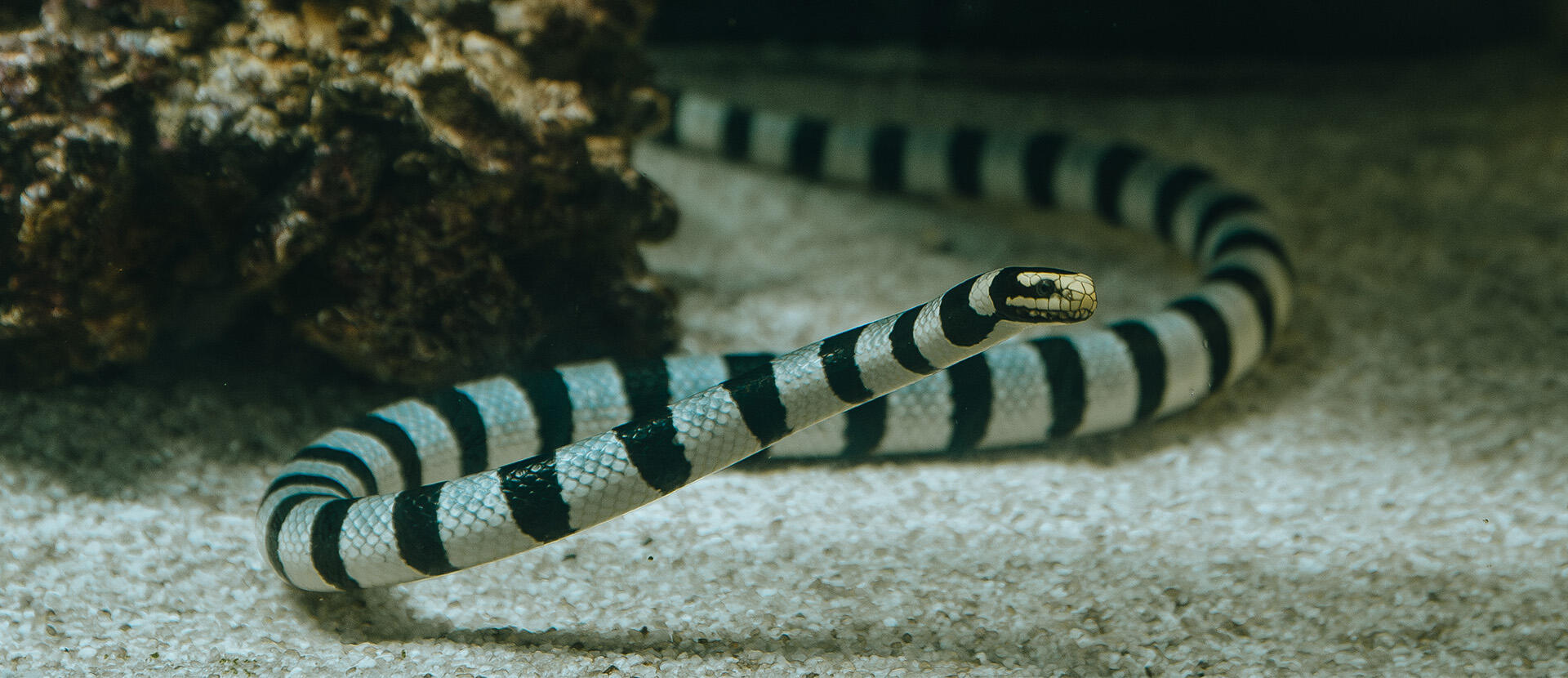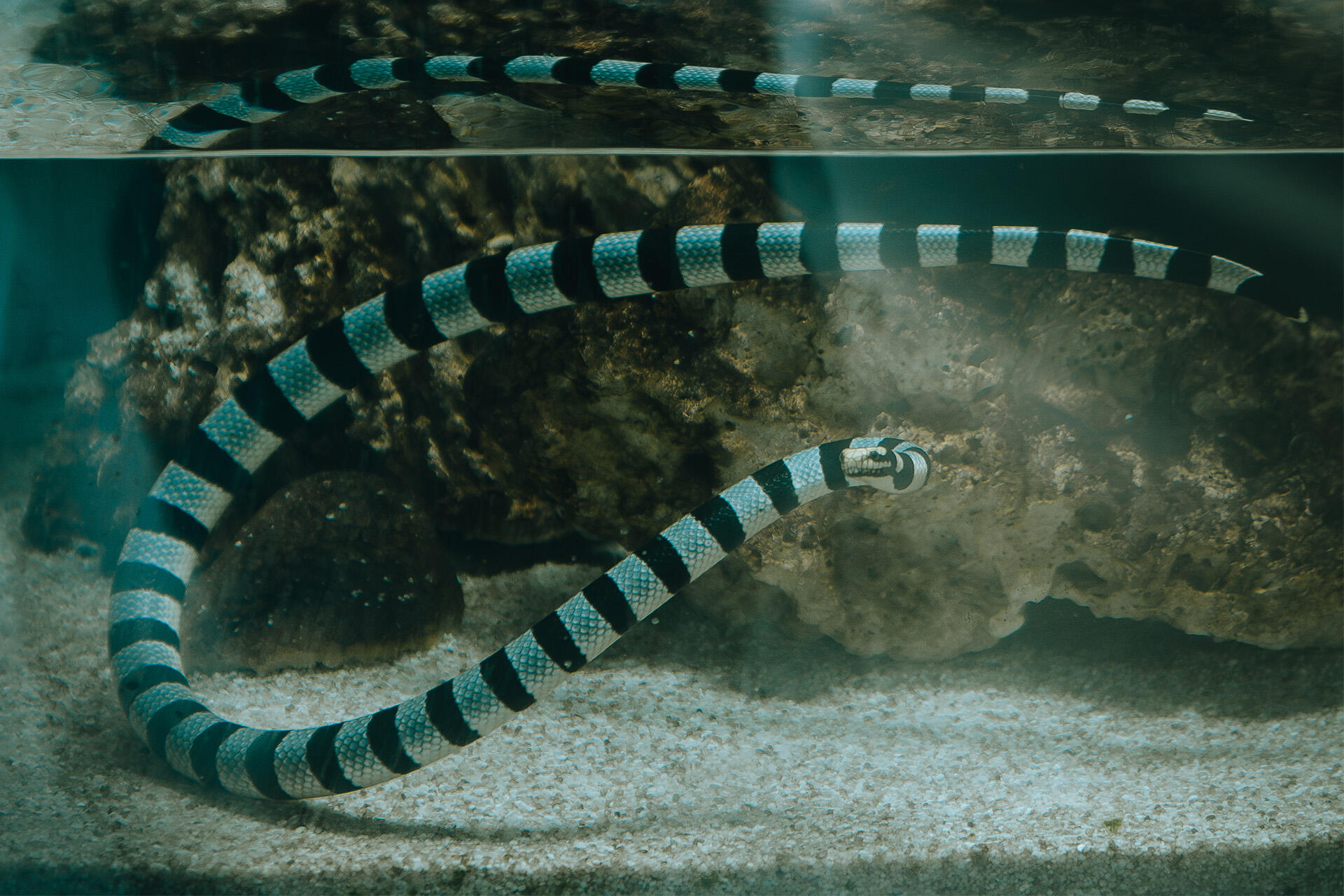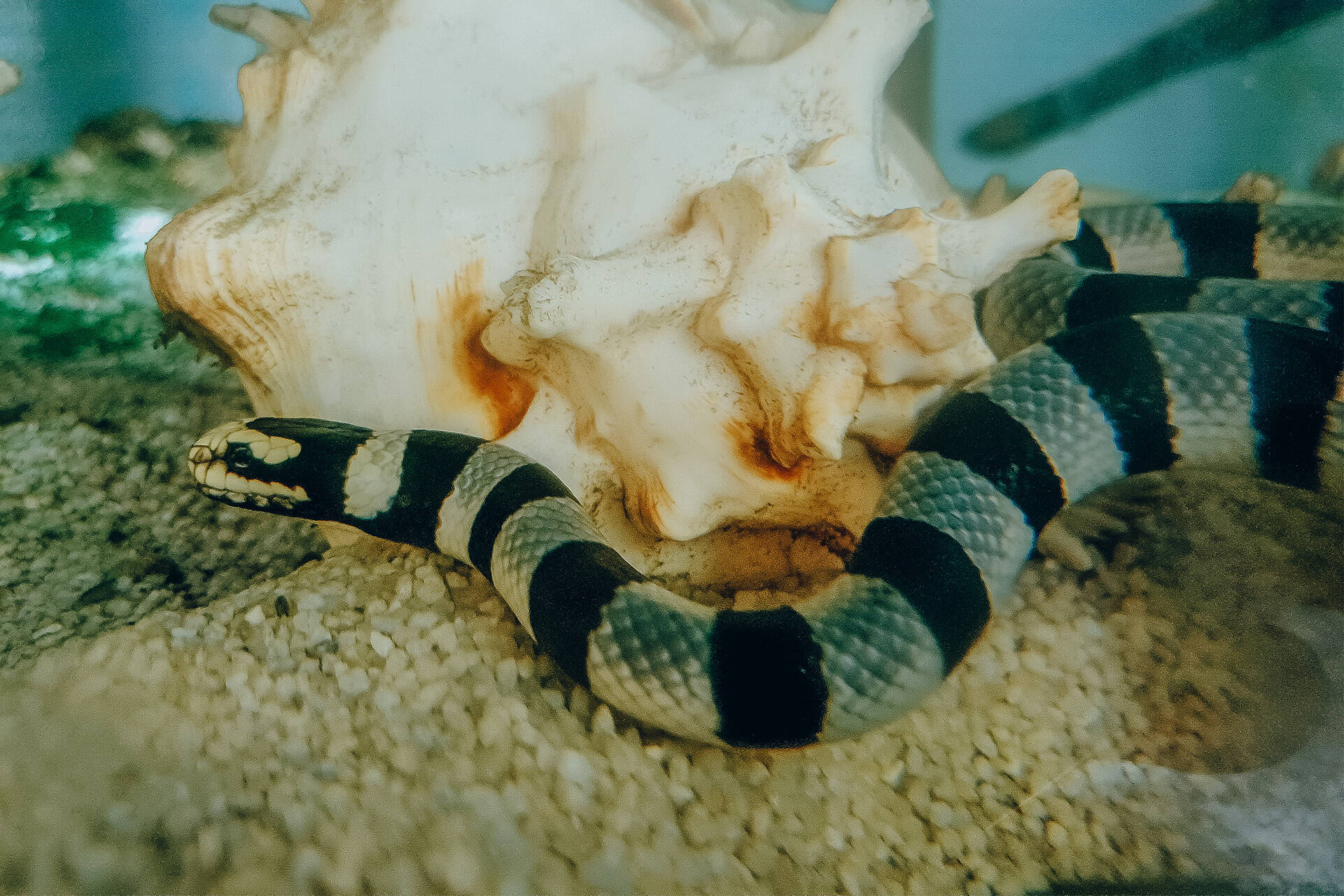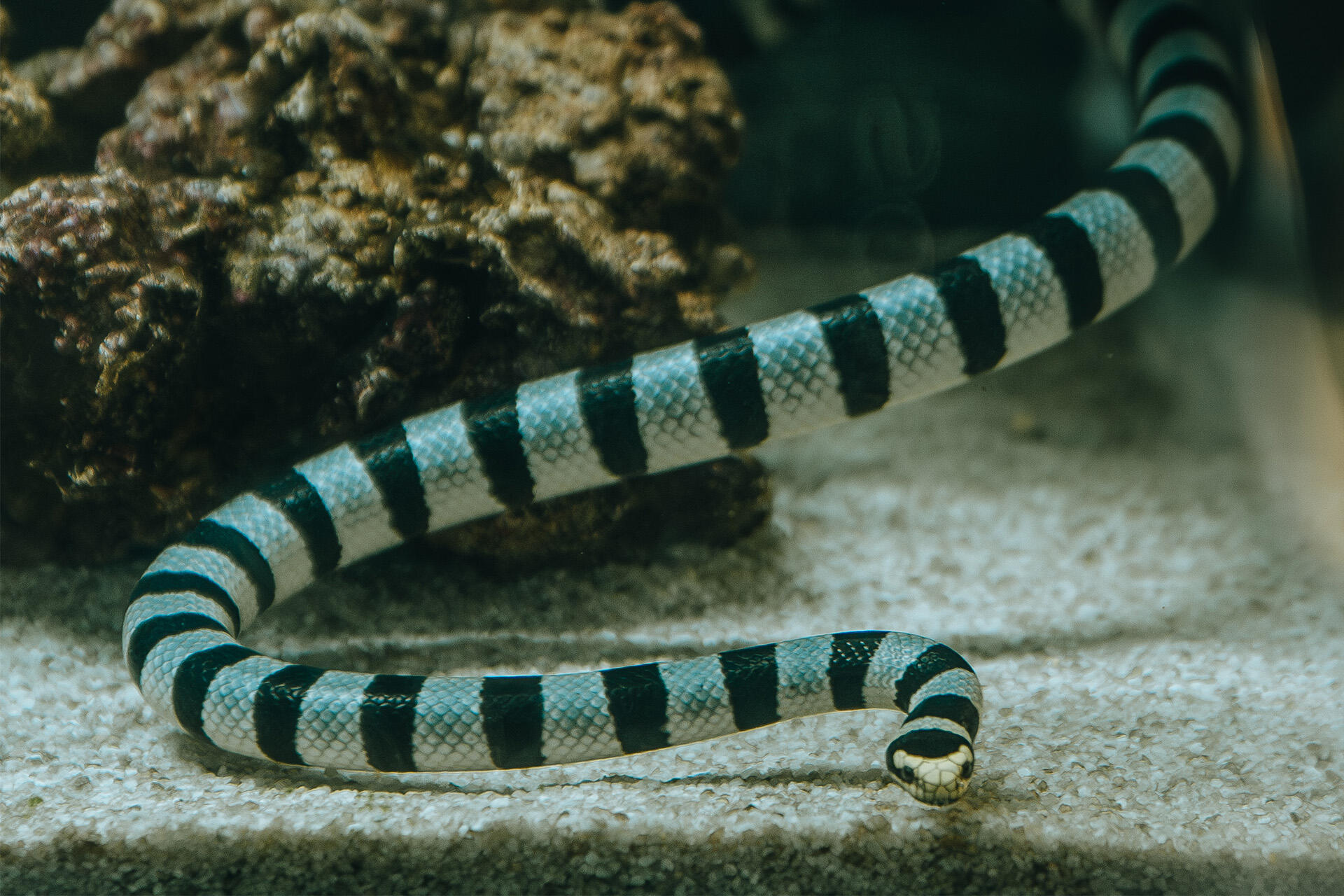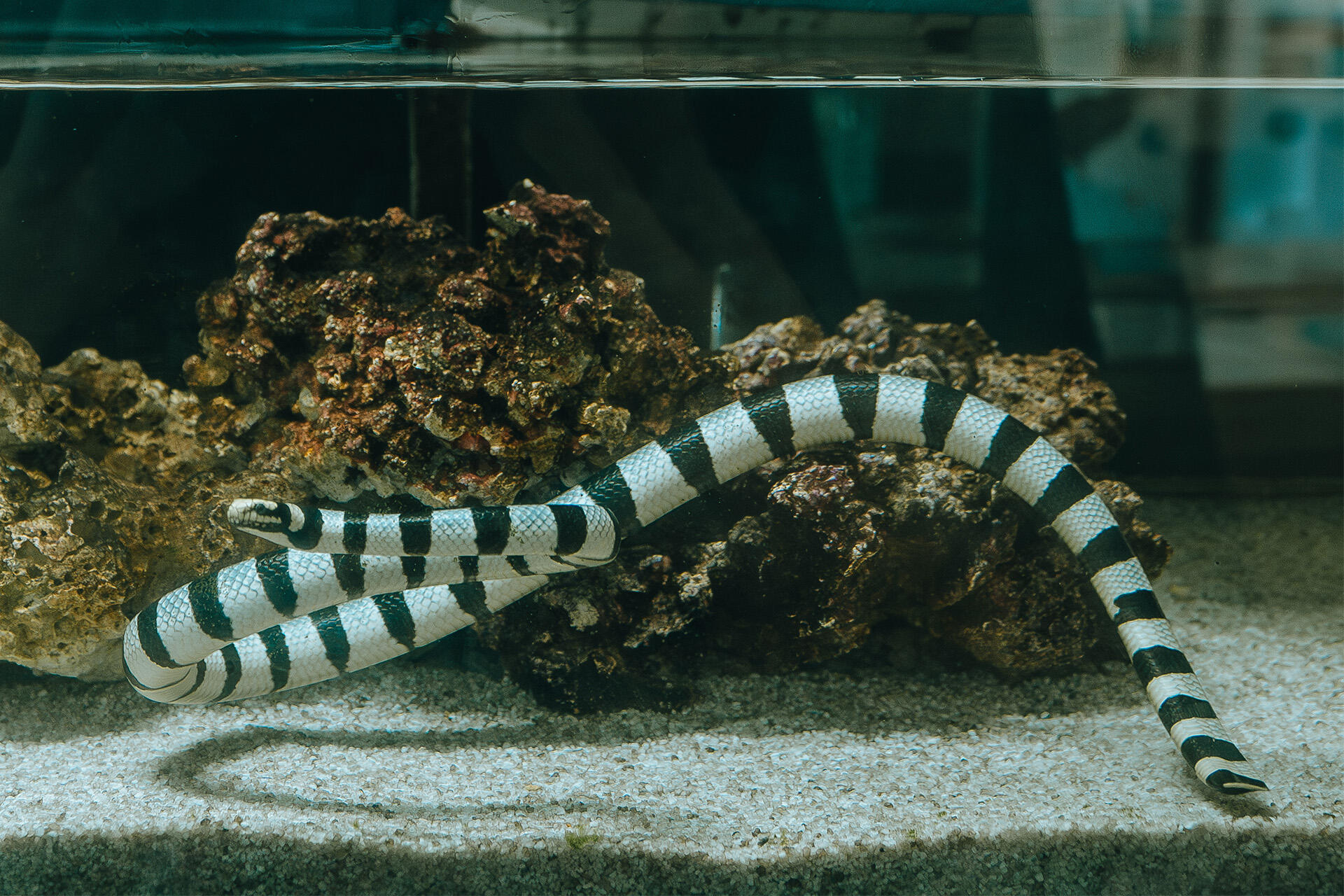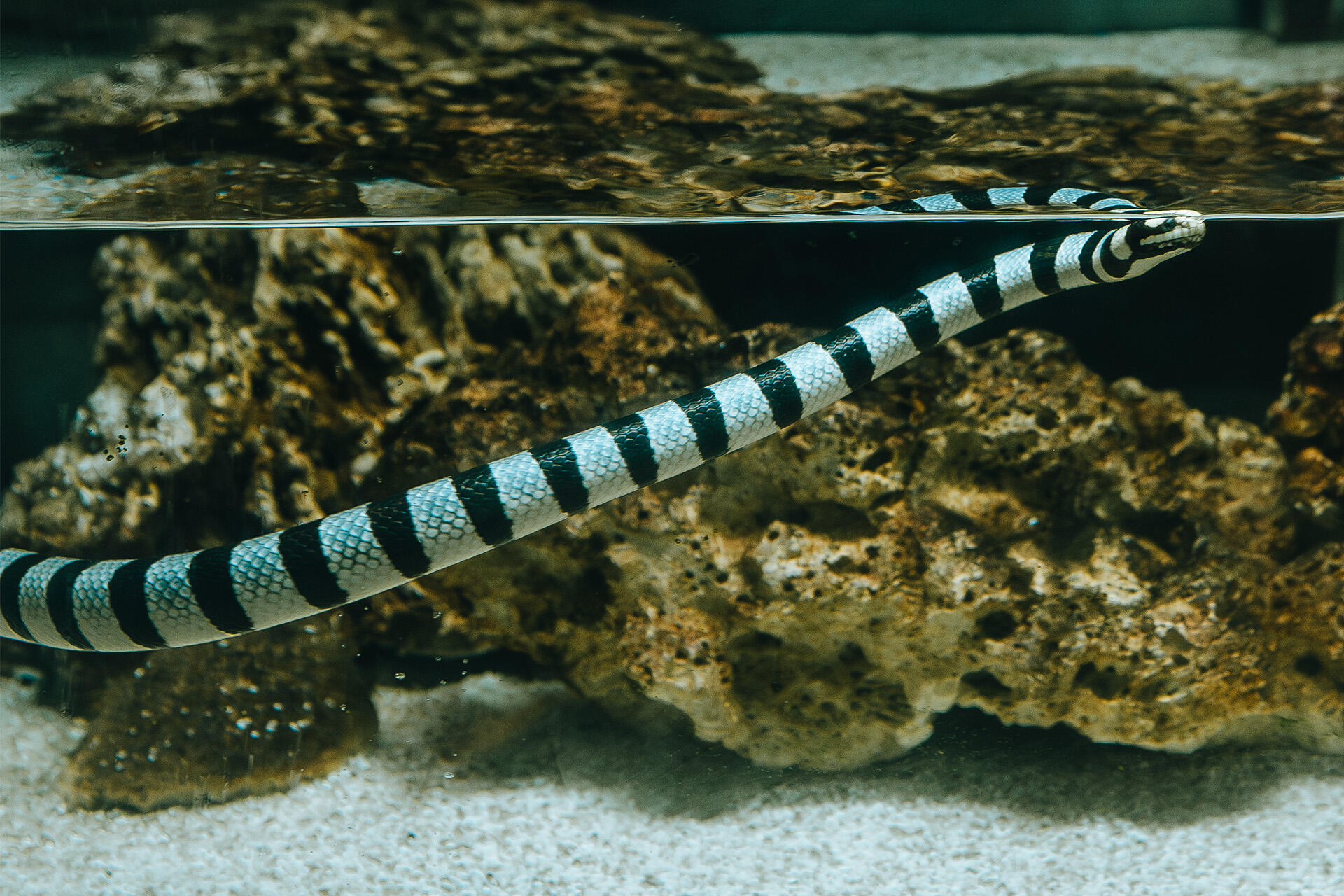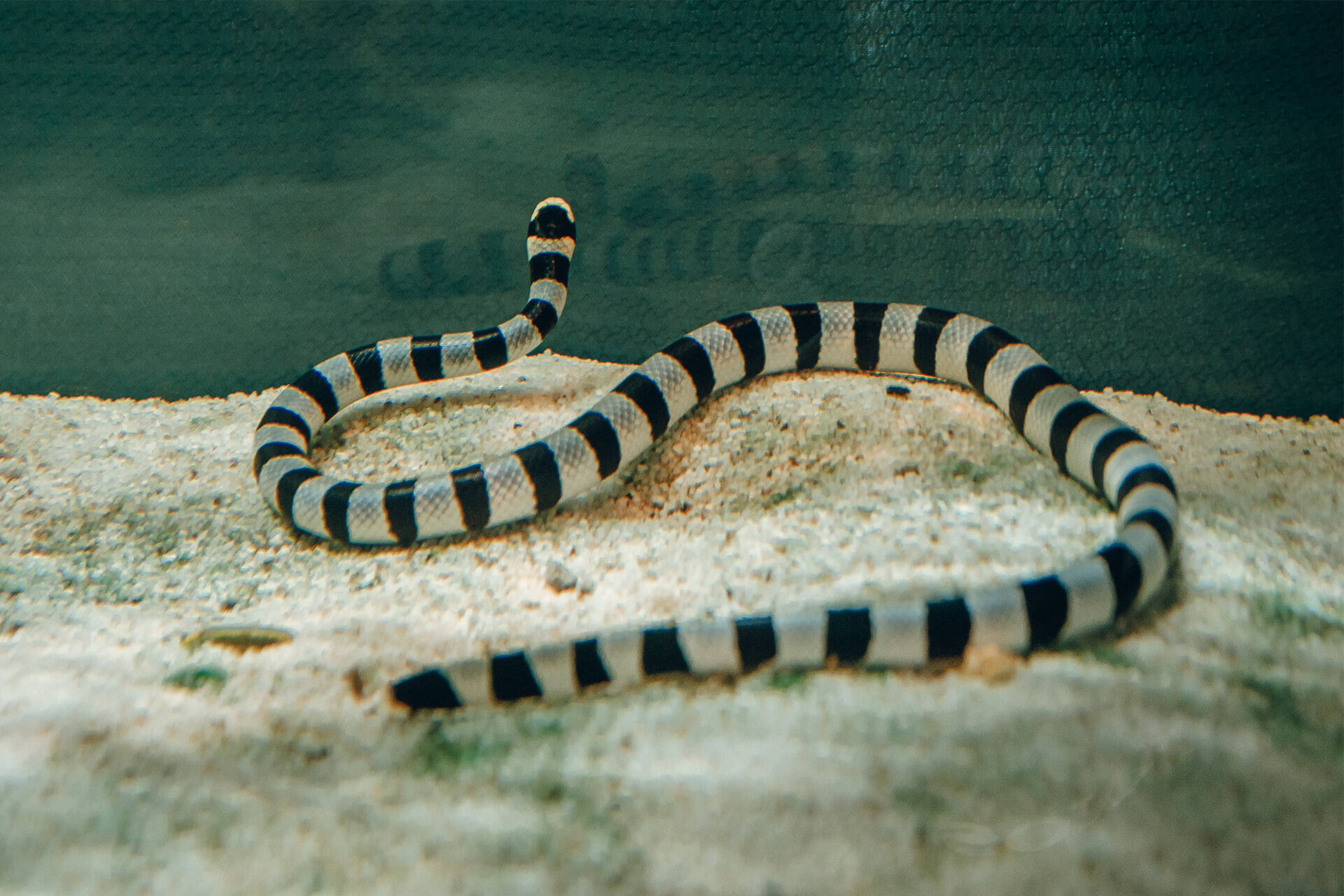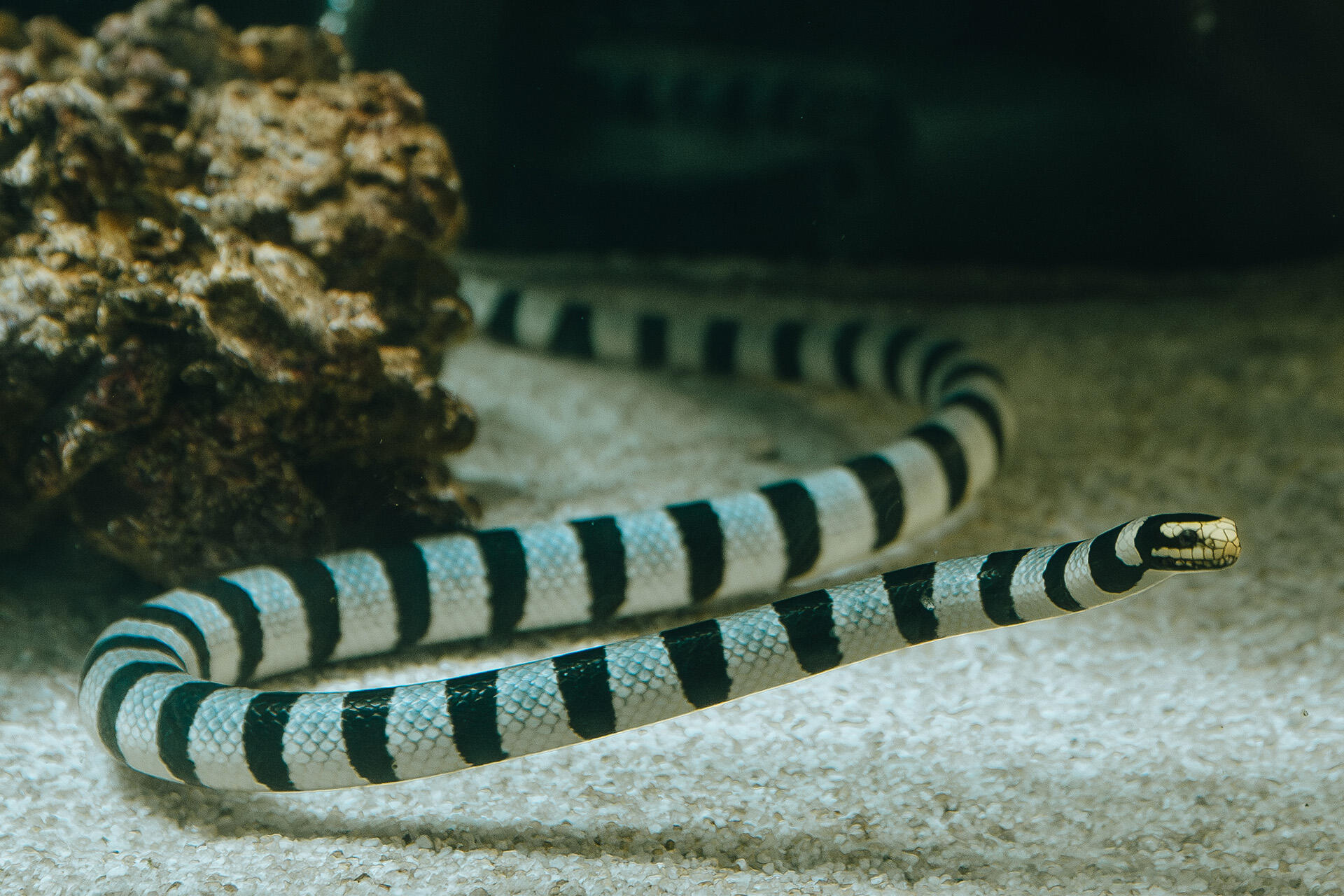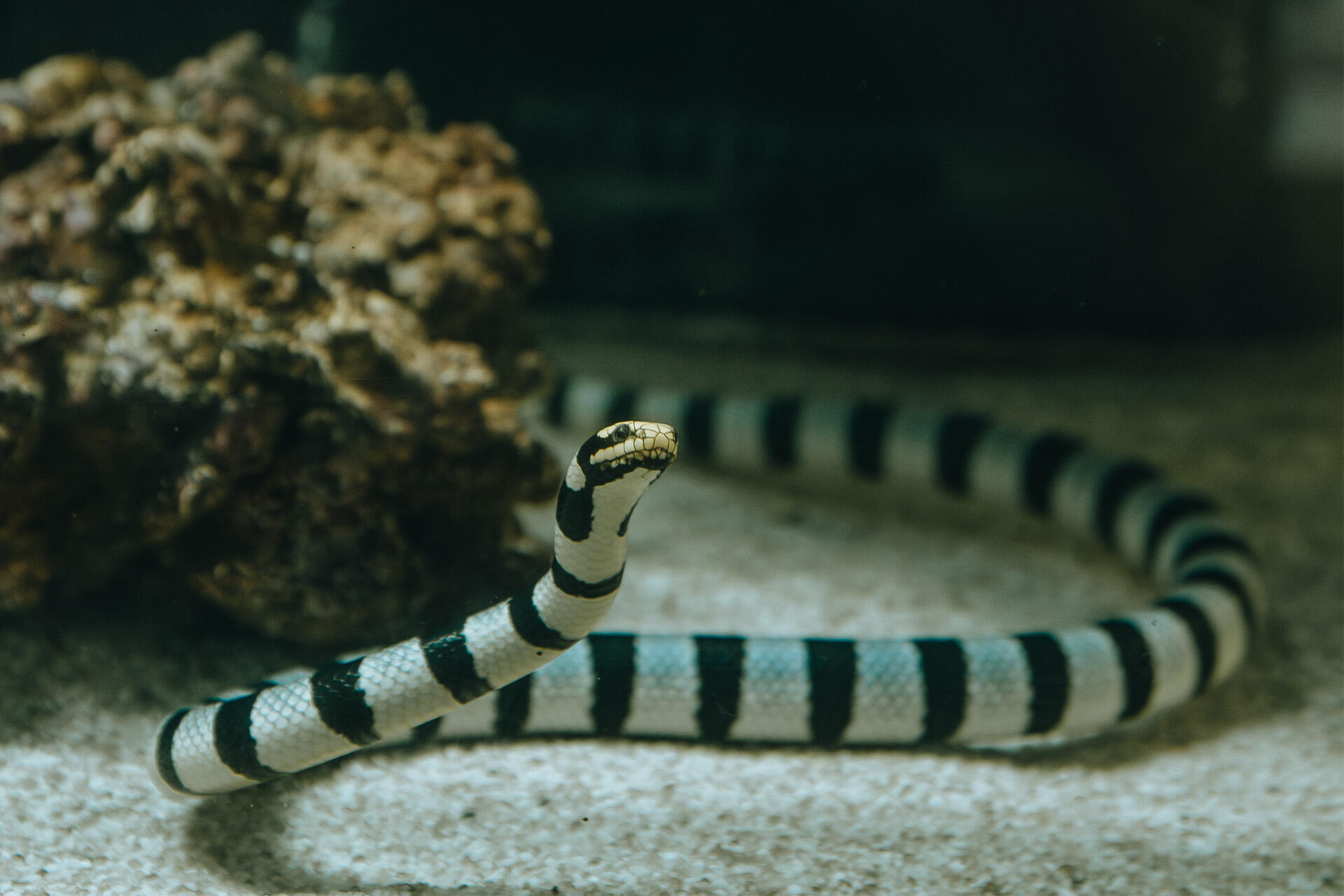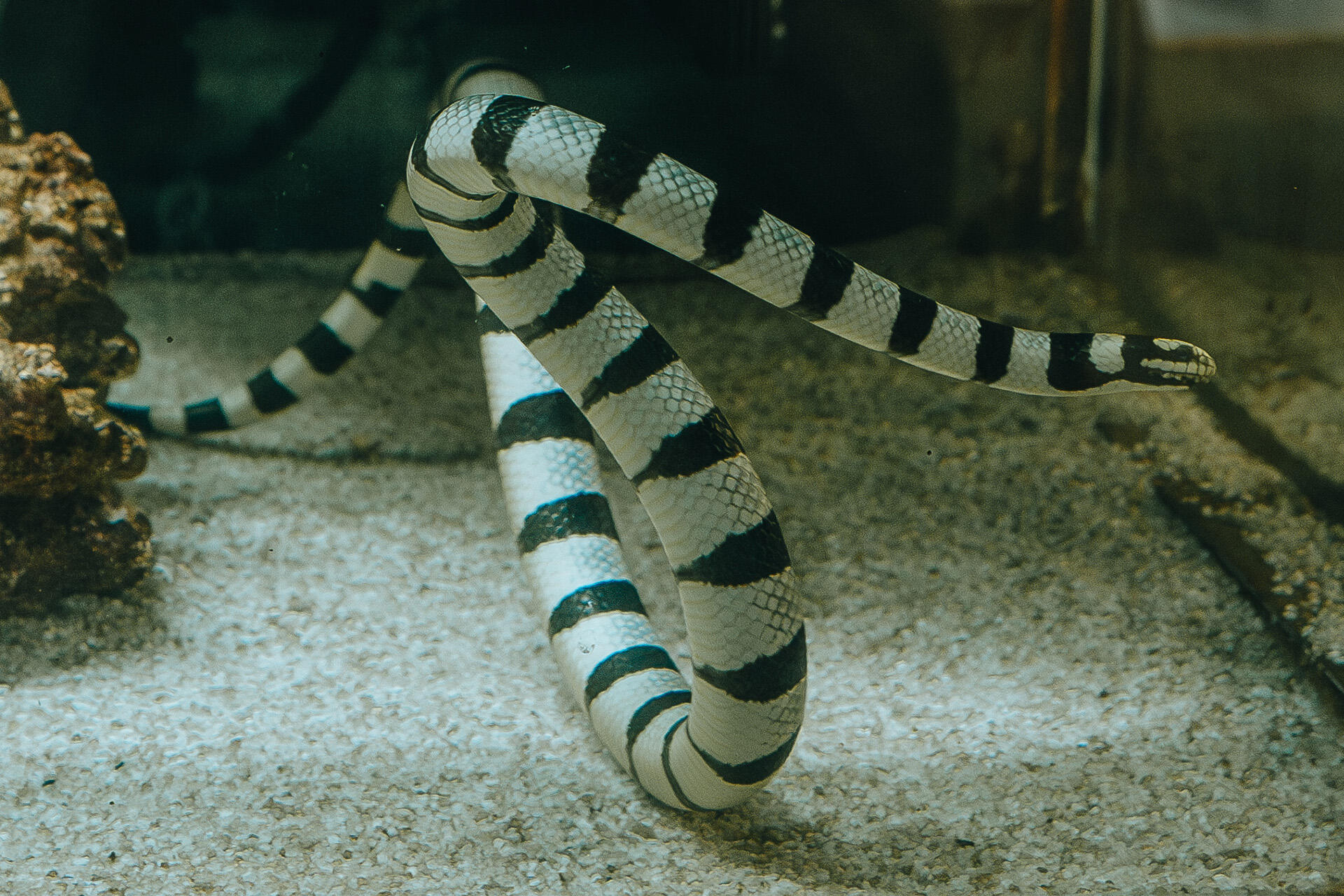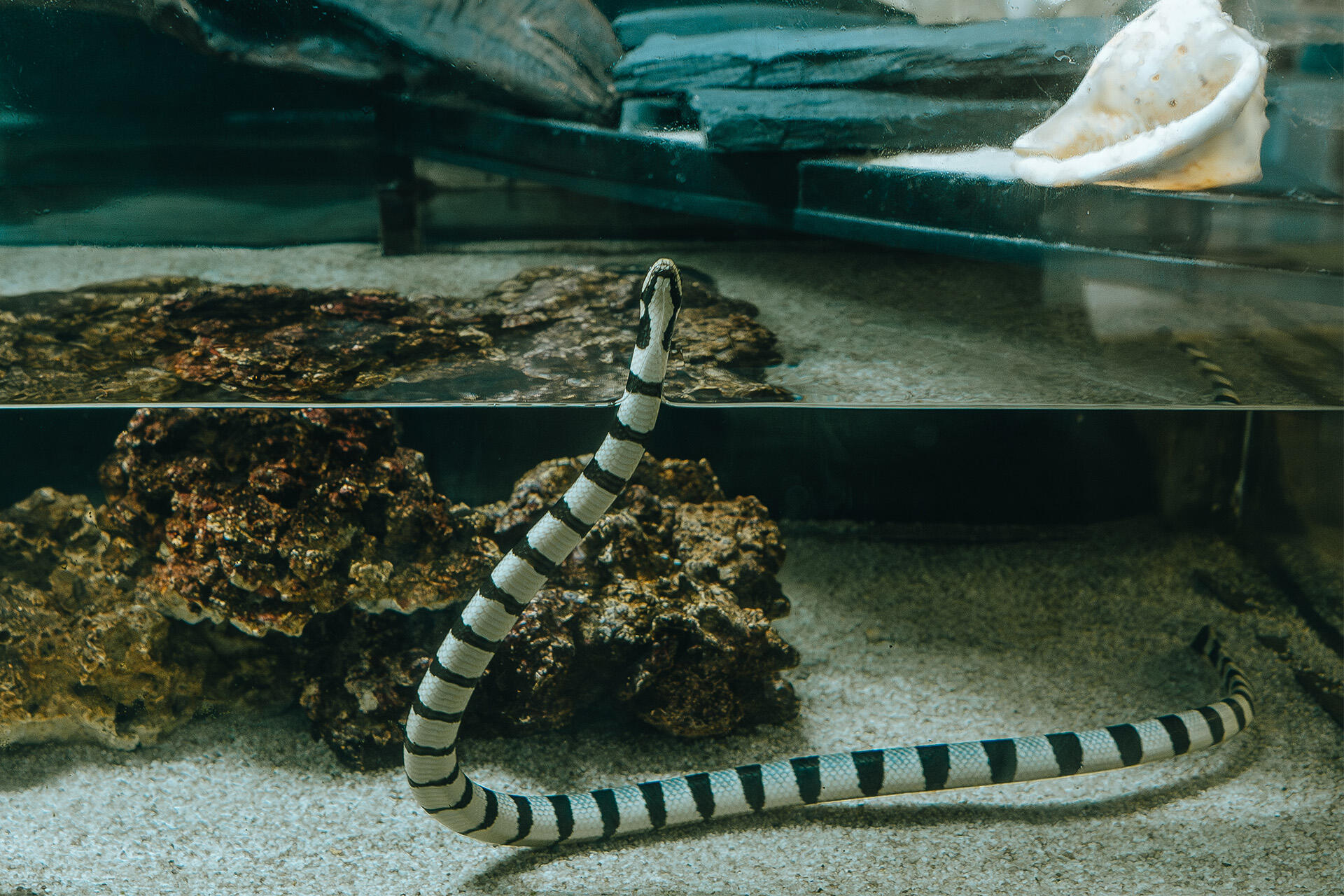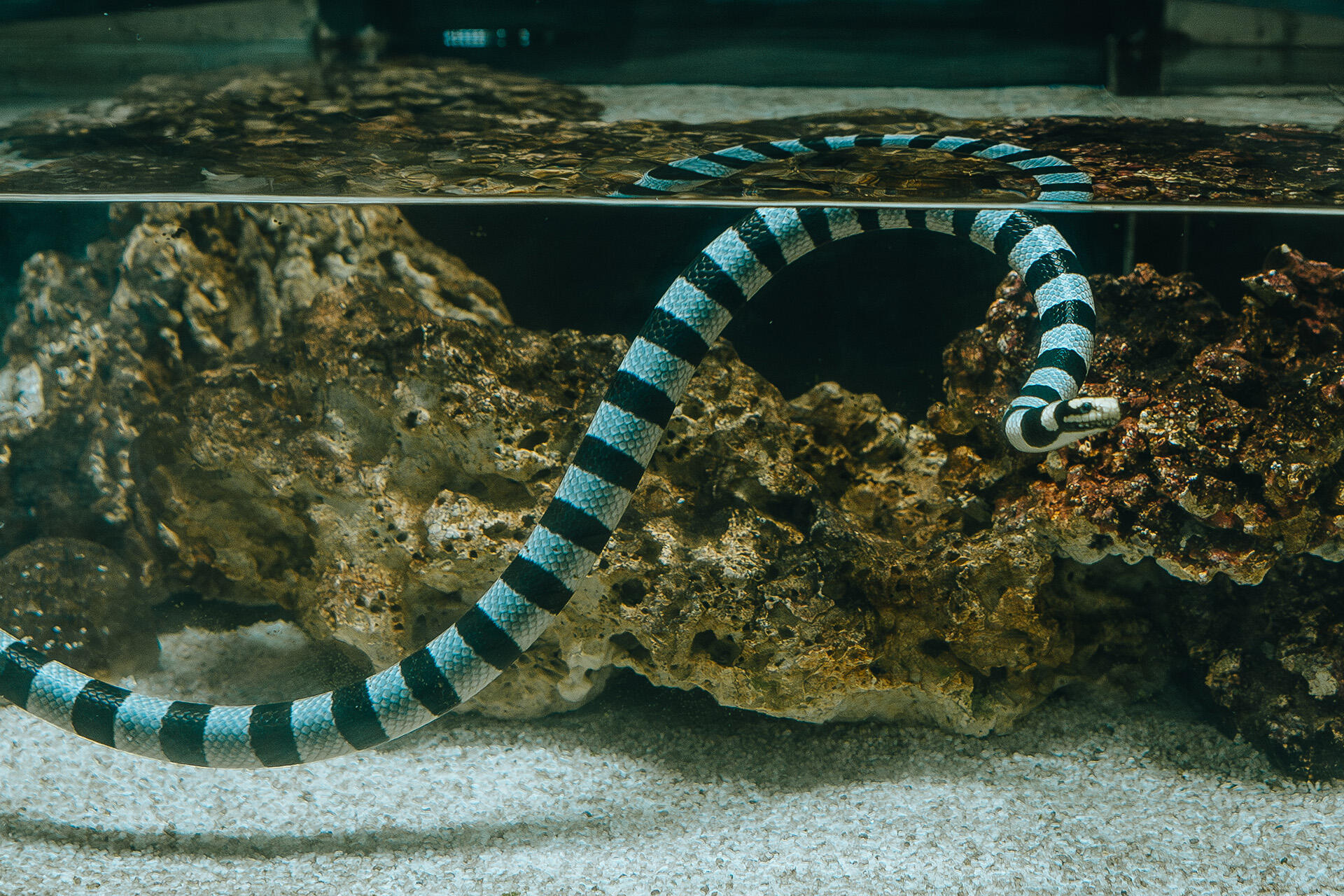Long-distance swimmers
New Zealanders might be surprised to know that we have a native snake – a sea snake that is!
Yellow-lipped sea kraits have the widest distribution of any sea krait, being found in the Indo-Pacific region from the eastern coast of India to the western Pacific islands as far as Tonga. On a rare occasion, a sea krait will accidentally make it to Aotearoa New Zealand!
Although they pop up from time to time, sea kraits are unable to establish in New Zealand as the temperatures are too low for them to survive the winter. They are used to tropical climates, but as sea temperatures rise it’s possible we will see more of them venture to Aotearoa in the future, especially the upper North Island. As they can make their way here on their own (even as accidental visitors) sea kraits are considered a vagrant native species and protected under New Zealand’s Wildlife Act.
Slithery scaly snake!
Land snakes have wide scales on their belly for slithering on land, whereas sea snakes often have smaller belly scales. Since sea kraits go on land and in the water, they have wider belly scales to help when they’re moving on dry terrain. The yellow-lipped sea krait has a steely blue colour with black banding across its body, which fades to yellow on its underside and facial mask. Females are generally larger than males, growing up to 1.7 metres in length and weighing up to 1 kilogram. Males rarely exceed 1 metre in length.


